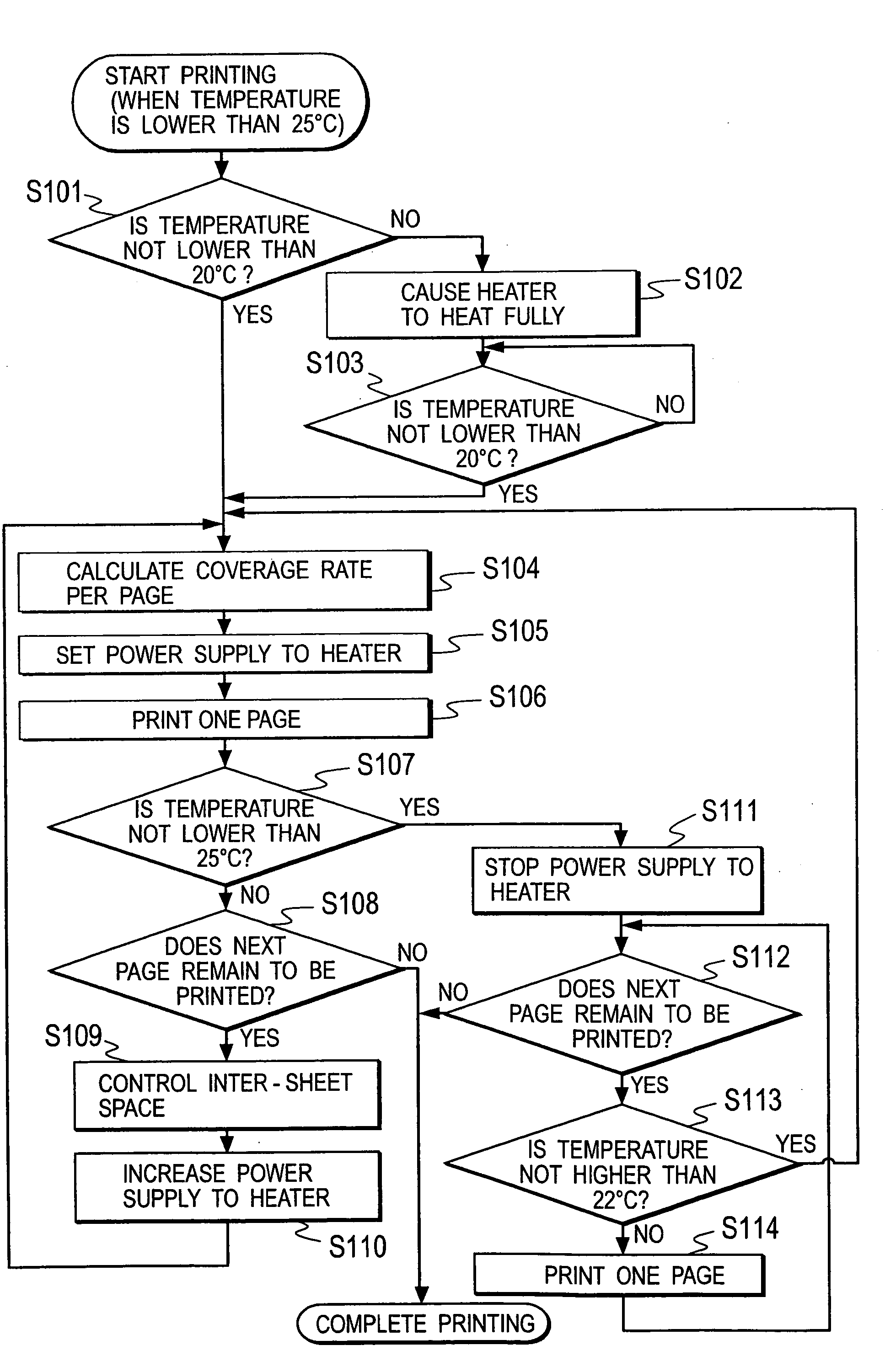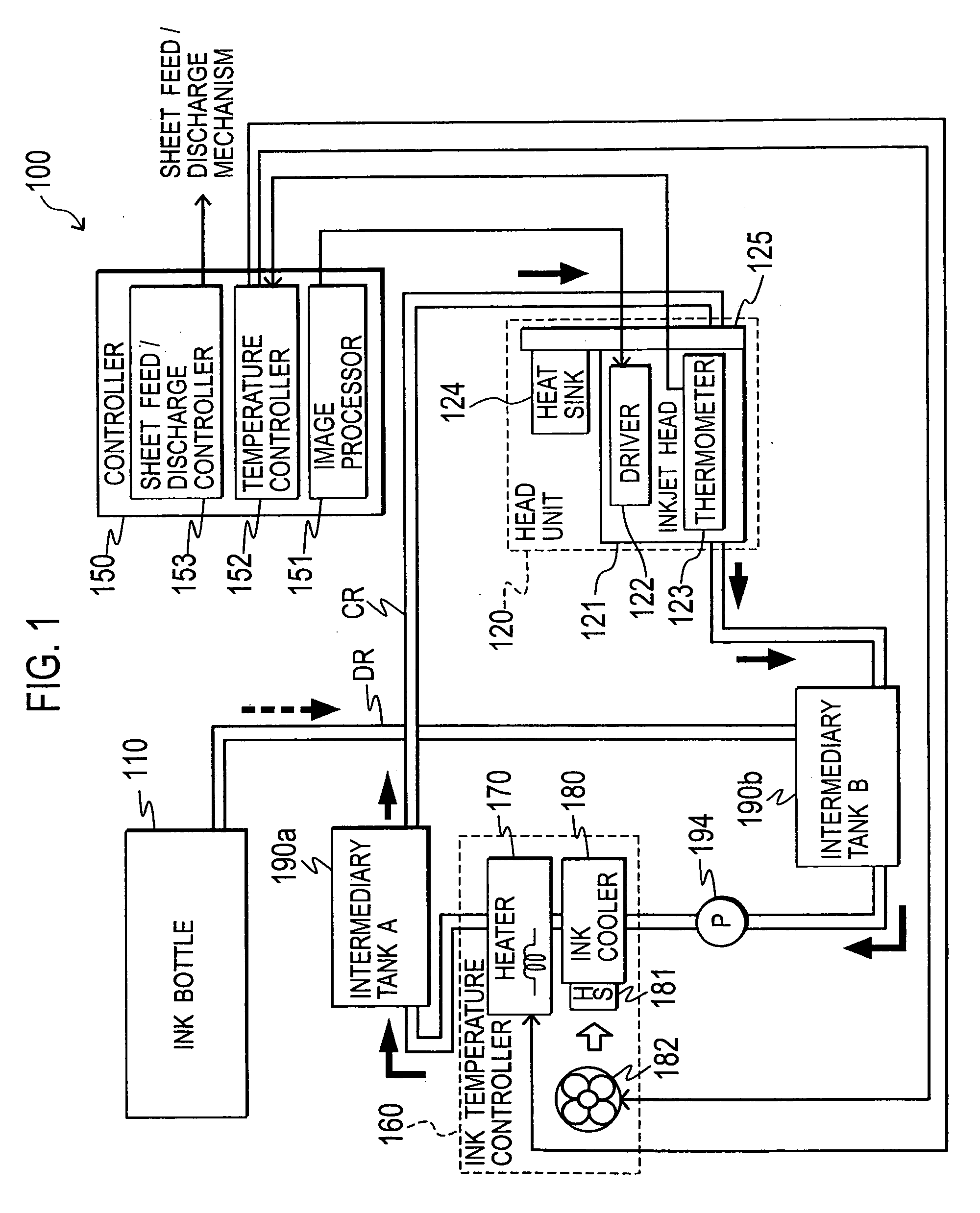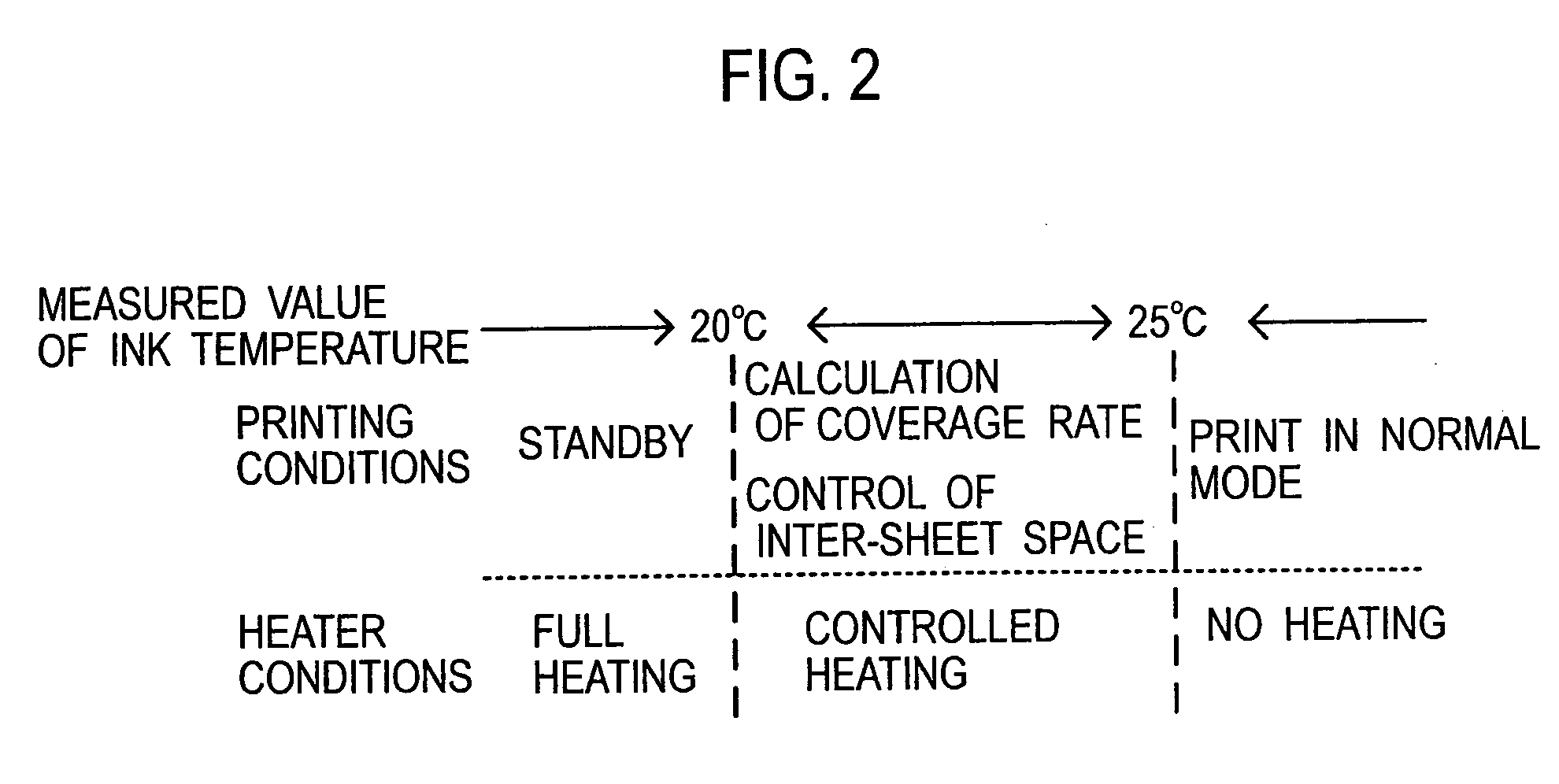Printer and control method thereof
a control method and printer technology, applied in the field of inkjet printers, can solve the problems of difficult to increase the electric power to be supplied to the heater, take a longer time before the inkjet printer starts its printing operation, and increase the cost of the inkjet printer, etc., and achieve the effect of increasing costs
- Summary
- Abstract
- Description
- Claims
- Application Information
AI Technical Summary
Benefits of technology
Problems solved by technology
Method used
Image
Examples
first example
[0047]Descriptions will be provided for the first example. FIG. 2 shows a relationship among a measured value of the ink temperature (shown in the uppermost row in FIG. 2), a printing condition (the middle row in FIG. 2) and an operating condition of the heater 170 (the lowermost row in FIG. 2). In the first example, as shown in FIG. 2, when the measured value of the ink temperature is lower than 20° C., the inkjet printer enters standby mode without carrying out any actual printing operation, and the heater 170 heats the ink with a maximum amount of electric power which can be supplied to the heater 170 (in full heating mode) by the power supply unit. At this time, the ink is circulated in the circulation passage CR. This makes it possible to increase the ink temperature rise rate, and accordingly to shorten the time for which the inkjet printer stands by for starting the printing operation as much as possible. It goes without saying that the maximum amount of electric power which ...
second example
[0059]Next, descriptions will be provided for the second example. FIG. 5 shows a relationship among a measured value of the ink temperature (shown in the uppermost row in FIG. 5), a printing condition (the middle row in FIG. 5) and an operating condition of the heater 170 (the lowermost row in FIG. 5). In the second example, as shown in FIG. 5, when the measured value of the ink temperature is lower than 20° C., the inkjet printer is put in standby mode without carrying out any actual printing operation, and the heater 170 heats the ink with a maximum amount of electric power which can be supplied to the heater 170 by the power supply unit, like in the first example. At this time, the ink is circulated in the circulation passage CR. This makes it possible to increase the ink temperature rise rate, and accordingly to shorten the time for which the inkjet printer stands by for starting the printing operation as much as possible. It goes without saying that the maximum amount of electr...
PUM
 Login to View More
Login to View More Abstract
Description
Claims
Application Information
 Login to View More
Login to View More - R&D
- Intellectual Property
- Life Sciences
- Materials
- Tech Scout
- Unparalleled Data Quality
- Higher Quality Content
- 60% Fewer Hallucinations
Browse by: Latest US Patents, China's latest patents, Technical Efficacy Thesaurus, Application Domain, Technology Topic, Popular Technical Reports.
© 2025 PatSnap. All rights reserved.Legal|Privacy policy|Modern Slavery Act Transparency Statement|Sitemap|About US| Contact US: help@patsnap.com



